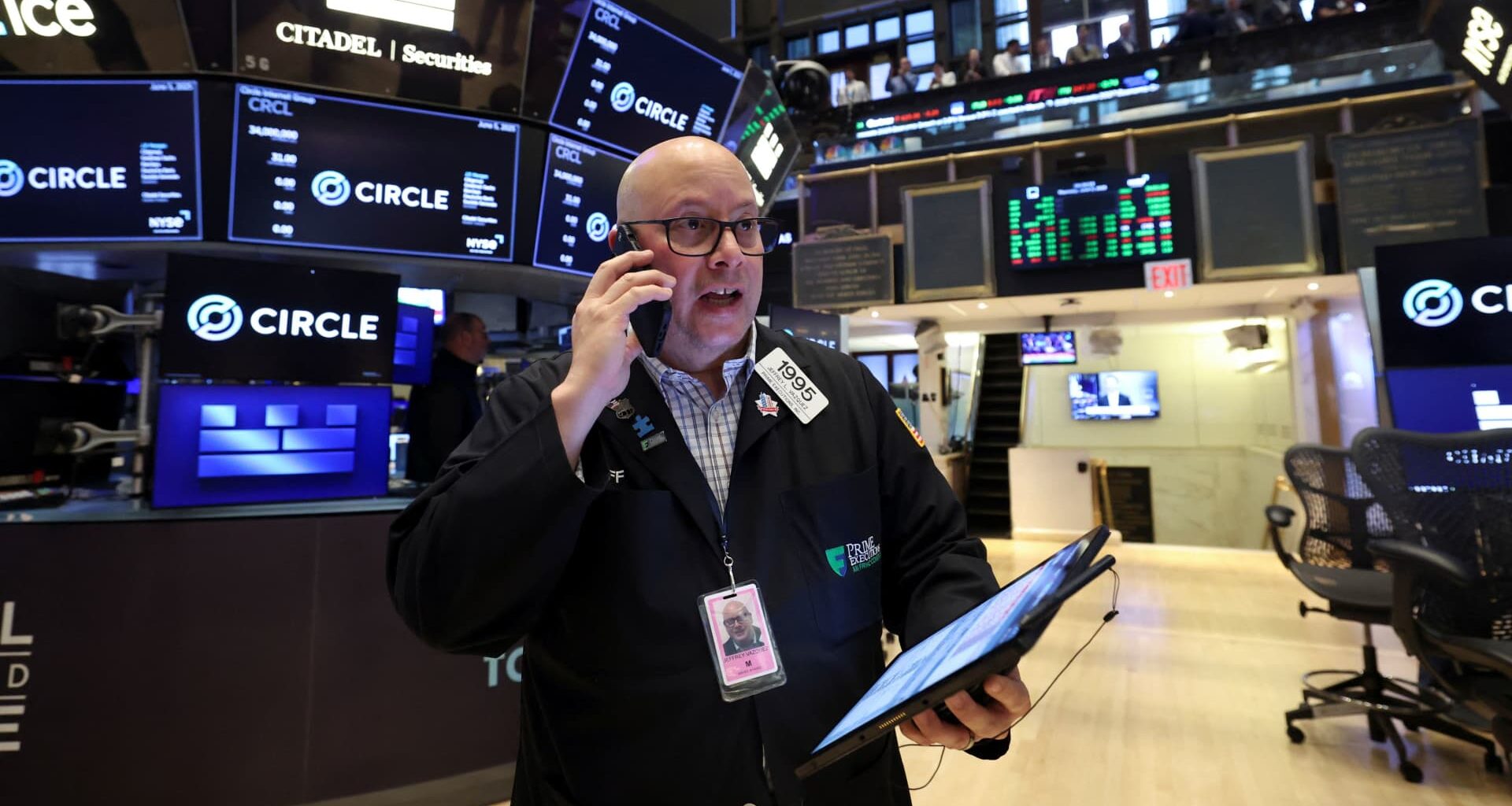Traders work on the floor at the New York Stock Exchange (NYSE), on the day of Circle Internet Group’s IPO, in New York City, U.S., June 5, 2025.
Brendan McDermid | Reuters
Stocks jumped Friday after the latest nonfarm payrolls data came in better than expected, easing concern the economy faces an imminent slowdown.
The Dow Jones Industrial Average popped 510 points, or 1.2%. The S&P 500 also gained 1.2% — touching the 6,000 level for the first time since late February — and the Nasdaq Composite rallied 1.4%.
The market’s move higher was supported by a more than 3% gain in Tesla. Shares of the electric vehicle maker weighed on the market Thursday, tumbling 14%, as CEO Elon Musk sparred with President Donald Trump on social media. Other major tech-related names such as Nvidia, Meta Platforms and Apple also traded higher on the day.
Those gains came after U.S. payrolls climbed 139,000 in May, the Bureau of Labor Statistics reported Friday, above the Dow Jones forecast of 125,000 for the month but less than the downwardly revised 147,000 in April. The unemployment rate was unchanged at 4.2%.
“The nonfarm payrolls report came in better than expected,” Anthony Saglimbene, chief market strategist at Ameriprise, said in an interview with CNBC. “It’s showing that the labor market is holding up very well in spite of kind of some slowing growth trends.”
A series of data released earlier this week signaled a possible economic slowdown, raising questions about the impact of the multi-front tariff negotiations and the next steps for the Federal Reserve, which next meets to set interest rate policy on June 17-18.
On Thursday, unemployment claims for last week’s period came in higher than expected. That came a day after ADP reported that private sector payrolls saw a gain of just 37,000 in May, which substantially missed the Dow Jones estimate for 110,000. Activity in the U.S. services sector also weakened unexpectedly last month.
“There’s still some uncertainty about what the inflation impacts are going to be from from the tariffs,” Saglimbene continued, adding that he expects tariff impacts to start showing up more in the economic data during the summer. “Markets are kind of holding judgment about what all this means for growth and profitability over the next couple quarters, and so we’re kind of back to where we were in February.”
The S&P 500 is currently trading less than 3% below its late February high. The broad market index, along with the other two major indexes, are also on pace for meaningful gains for the week. The S&P and Dow are each up more than 1% week to date, while the Nasdaq is up more than 2%.
